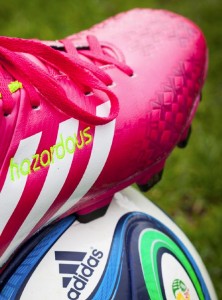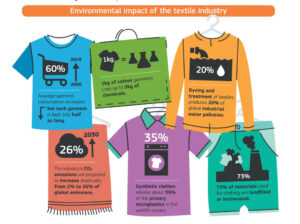To read the full article, please login. The full content of this article and all premium articles is available exclusively for site members.
Site membership is free. If you are an existing user, please login. New users may register below.
The risks and alternatives of APEO and NPEO in textiles part 2
The risks and alternatives of APEO and NPEO in textiles (2/2) Introduction In the first part of this article the risks of the use of APEO products were shown. The second part gives information about product alternatives, global regulations and environmental advantages after the ban of APEO in Europe. Moreover, the results of the Greenpeace research about nonylphenol ethoxylate residues in textiles are discussed opposite the joined efforts of the ZDHC project. Alternatives to replace APEO/NPEO In most applications, APEOs can be replaced by linear alcohol ethoxylate surfactants, which are readily biodegradable. However, direct replacement can be difficult in some situations. In contrast to the alkylphenols, nonionic surfactants which are based on ethoxylations, are not composed of a single substance, but they are mixtures of molecules with different numbers of ethylene oxide building blocks. There are large differences during the chemical reaction of a fatty alcohol with ethylene oxide. Alkyl phenols possess the highest reactivity, which made them so interesting for the chemical industry. Because of the high reactivity it is possible to synthesize an end product which contains a high percentage of the desired substance, whether or not a high or low degree of ethoxylation is sought. Since fatty alcohols are the reactants with the lowest reactivity, all fatty alcohol ethoxylates always contain a considerable proportion of unreacted fatty alcohol. Fatty alcohols are not water soluble and reduce the alkali stability of the final products. After years of use toxicological problems of APEOs came to light. APEOs itself are not toxic, but after the biodegrading of the ethoxylates there is a residue of fish toxic alkyl phenols. In earlier years only the toxic problem of the single product was tested. Nowadays the toxicity of the degradation products and the final residue must be tested as well, before their use is permitted. Among numerous analytical methods the so-called Wickbold method has been developed to such an extent that a waste water analysis can detect concentrations as low as 0.01 ppm. Alcohol ethoxylates (AEs) are a class of nonionic surfactants which are globally produced and used. The primary route into the environment is through down-the-drain disposal from consumer products. More than 1 million metric tons of these materials are consumed yearly. Their environmental safety is largely a function of their removal in wastewater treatment plants and lack of availability in the aquatic environment. Scientific assessment techniques have evolved through time, and awareness of important fate and effect processes were identified as research evolved. A milestone for AE environmental risk assessment was achieved in the 1990s when an extensive review of the environmental safety of surfactants used in the Netherlands market was performed[28]. Typical non-ionic surfactants with favorable ecological properties can be found in the following application examples: When dyeing knitted cotton goods it is often essential to prewash the material before dyeing. Some surfactant compounds based on alkyl ether sulphates combine a wetting, emulsifying and dispersing effect. Dyeing processes can be carried out without the need for precleaning and bath changes.


